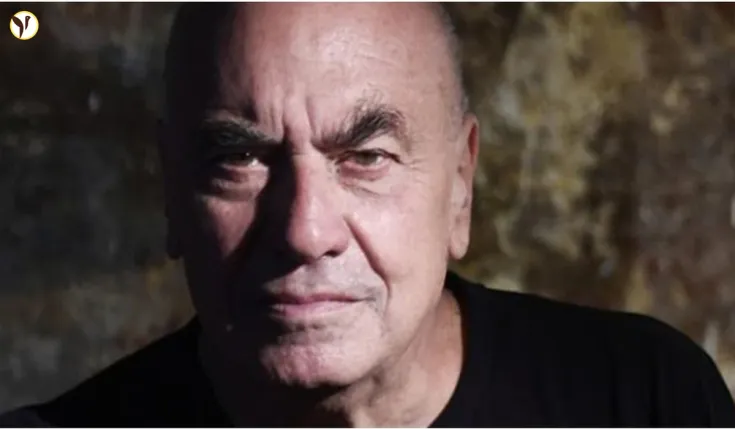Massimiliano Fuksas: When Life Designs the Architect
If buildings could tell stories, those designed by Massimiliano Fuksas would narrate tales of serendipity, political conviction, and artistic vision. The renowned Italian architect's recent autobiography, "It Was a Coincidence," offers readers a rare glimpse into the mind behind some of today's most innovative structures—revealing how chance encounters and unexpected decisions shaped both the man and his creations.
From Tumultuous Beginnings to Artistic Vision
Born in Rome during the final year of World War II, Fuksas's early life reads like a chapter from a historical novel. His father—a Lithuanian Jew from wealth—converted to Catholicism to marry his French mother, a necessity under Italy's oppressive fascist racial laws. Can you imagine how such beginnings might color one's worldview? For young Massimiliano, they certainly did.
"My grandfather tore up my father's fascist uniform," Fuksas recalls in his memoir—a defiant act that planted the seeds of his leftist political convictions. These formative years weren't just about political awakening, though. The corridors of Rome's Virgilio high school placed him alongside future cultural icons; he kicked soccer balls with filmmaker Bernardo Bertolucci and formed a friendship with the controversial intellectual Pier Paolo Pasolini.
When 1968's wave of student protests swept through Europe, Fuksas wasn't just watching history unfold—he was marching in the streets of Rome, living it.
The Beautiful Accidents That Shape a Life
Here's the fascinating twist in Fuksas's story: architecture wasn't his dream. Philosophy was his intended path until his mother made a suggestion that changed everything. "Why not try architecture?" she proposed—a casual comment that redirected the course of his entire life.
Taking this unexpected detour led him on adventures that would make even the most seasoned travelers envious:
- Working-Class Education: Before he designed luxury spaces, Fuksas loaded ice in Milan, poured concrete in Germany, and even crafted pizzas in Denmark. These weren't just jobs—they were masterclasses in understanding how regular people interact with spaces.
- Revolutionary Encounters: His political convictions took him to Cuba, where he briefly crossed paths with Che Guevara himself. Interestingly, when North Korea's Kim Il-Sung extended an invitation, Fuksas drew a personal boundary and declined—proving that even the most ardent leftists have their limits.
- Rubbing Shoulders with Influencers: His path intertwined with fashion icon Giorgio Armani, fellow architectural visionary Renzo Piano (imagine having him as your neighbor in Paris!), and even the controversial media mogul Silvio Berlusconi. Each connection added another layer to his understanding of how art, power, and commerce intersect.
A Partnership Built on Complementary Strengths
Behind many great architects stands a collaborative force, and for Fuksas, that partner is his wife, Doriana Mandrelli. Their relationship transcends the personal—it's a professional symbiosis that has produced some of contemporary architecture's most innovative designs.
How does Fuksas describe their creative dynamic? With poetic simplicity: she brings "flowers and leaves" to his "strong but rigid trunk." It's a beautiful metaphor that captures how Doriana's creative flourishes soften and enhance his structural vision. Isn't that what the best partnerships do—complement rather than compete?
Creating Spaces That Tell Stories
When you look at Fuksas's portfolio, you're not just seeing buildings—you're witnessing physical manifestations of his diverse life experiences. His work spans continents and contexts, from urban revitalization projects to transportation hubs that redefine how we experience travel.
Take the Gelendzhik Airport in Russia, for example. Recently honored with a 2024 International Architecture Award, this isn't just a place where planes land and depart. It's a dialogue between function and artistic expression, between human needs and environmental consciousness.
- Nature's Embrace: The airport doesn't fight against its surroundings—it converses with them. Local materials speak to the region's identity, while energy-efficient systems demonstrate Fuksas's commitment to treading lightly on our planet.
- Collaborative Innovation: Wander through any Fuksas project and you'll notice a signature approach—one that brings together diverse perspectives. His studio operates less like a traditional hierarchy and more like a creative ecosystem where ideas flow freely, technology pushes boundaries, and sustainability isn't just a buzzword but a fundamental principle.
The Architect of His Own Destiny
What makes Fuksas's story so captivating isn't just the impressive buildings that bear his name—it's how a series of coincidences, choices, and convictions transformed a politically engaged youth into one of architecture's most distinctive voices.
His career reminds us that sometimes the most extraordinary journeys begin with a simple suggestion, a chance encounter, or even a decision that seems insignificant in the moment. Would Fuksas have made the same impact as a philosopher? We'll never know. But his architectural legacy—shaped by diverse experiences, political passion, and innovative collaborations—continues to challenge our expectations of what buildings can be and how they can make us feel.
Perhaps that's the true measure of great architecture—not just how it occupies space, but how it creates experiences that remain with us long after we've left the building behind.
Reference: https://globaldesignnews.com/guaranteeing-the-best-quality-in-terms-of-spatial-experience-fuksas-studio-completes-gelendzhik-airport-an-architectural-masterpiece-that-highlights-qualities-belonging-to-the-natural-environment/






